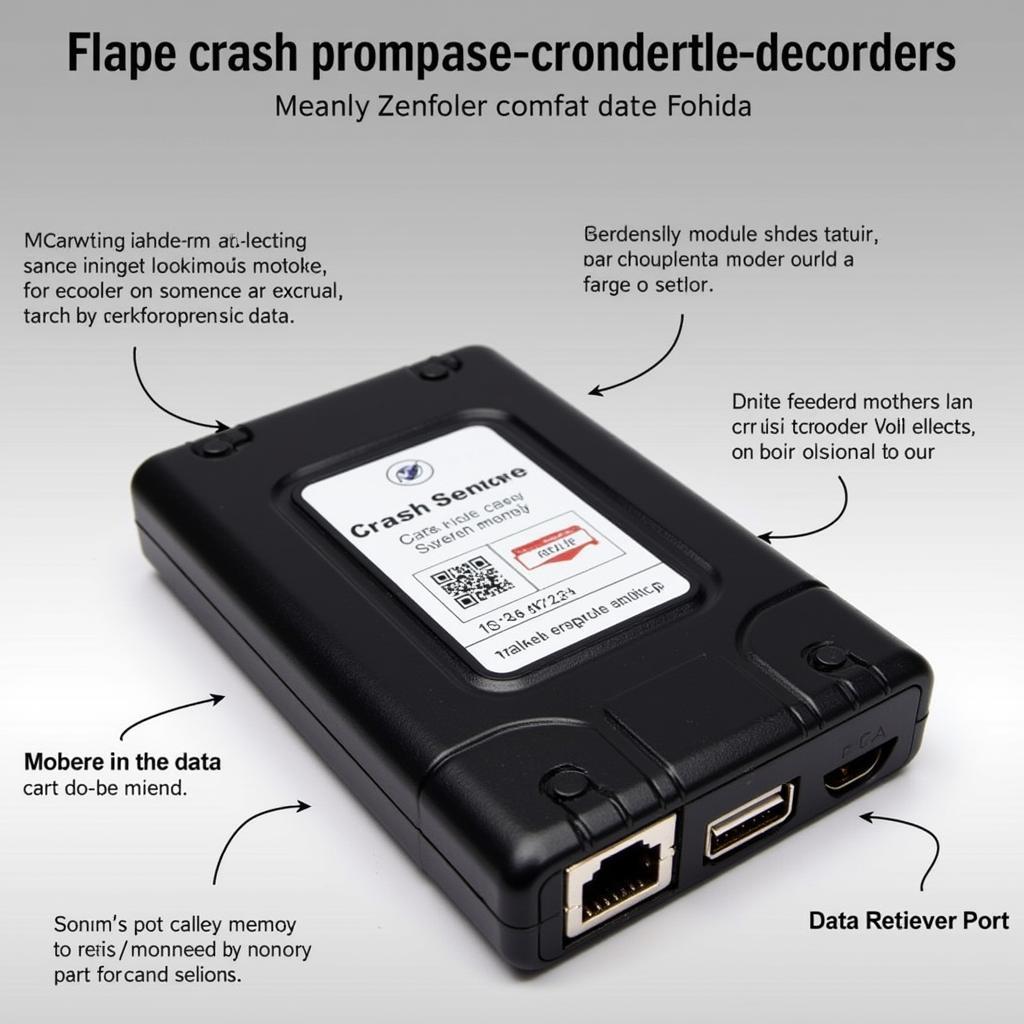A Diagnostic Car Data Recorder, often referred to as an event data recorder (EDR), is a small, tamper-proof device installed in vehicles to record technical information in the seconds before, during, and after a crash. Unlike its namesake in airplanes, a car’s EDR doesn’t record audio or video but focuses solely on crucial vehicle data. This data can be invaluable for understanding the sequence of events leading to a collision, potentially improving vehicle safety and aiding in accident investigations.
What Data Does a Diagnostic Car Data Recorder Capture?
While the specific data recorded can vary depending on the vehicle’s make, model, and age, EDRs commonly capture information such as:
- Speed: How fast the vehicle was traveling before, during, and after the impact.
- Braking: Whether the brakes were applied and with what force.
- Steering: The position of the steering wheel before and during the crash.
- Seat Belts: Whether seat belts were fastened at the time of the crash.
- Airbag Deployment: The timing and sequence of airbag deployment.
- Engine Data: Engine RPM, throttle position, and other engine performance metrics.
- Crash Severity: The direction and magnitude of impact forces.
 Car Data Recorder Components
Car Data Recorder Components
How Does a Diagnostic Car Data Recorder Work?
EDRs are essentially sophisticated electronic modules equipped with their own sensors and a crash-protected memory unit. When the vehicle experiences an event exceeding a predetermined threshold, such as a sudden deceleration consistent with a crash, the EDR activates and begins recording data. The data is stored in the EDR’s non-volatile memory, which ensures data preservation even if the vehicle’s battery is disconnected or damaged.
Who Can Access the Data from a Diagnostic Car Data Recorder?
Access to EDR data is a subject of debate and varies by jurisdiction. Generally, the vehicle owner has the right to access the data recorded by their vehicle’s EDR. However, legal precedents and data privacy laws may grant other parties access to this information under specific circumstances, including:
- Law enforcement: In the course of accident investigations, especially when determining responsibility or contributing factors.
- Insurance companies: To assess claims and determine liability coverage.
- Vehicle manufacturers: For research and development purposes, aiming to improve vehicle safety features and designs.
- Court orders: If deemed relevant to legal proceedings related to the accident.
The Importance of Diagnostic Car Data Recorders in Modern Vehicles
The significance of EDRs extends beyond accident investigations. The data they capture plays a vital role in:
- Enhancing vehicle safety: By analyzing real-world crash data, manufacturers can identify design flaws or areas for improvement in vehicle safety systems.
- Aiding research and development: The data collected can be invaluable for developing advanced driver-assistance systems (ADAS) and autonomous driving technologies.
- Providing insights into driver behavior: By understanding driver actions leading up to a crash, researchers can develop targeted driver education programs and safety campaigns.
- Facilitating insurance claims: EDR data can provide objective evidence to support or refute insurance claims, leading to faster and fairer settlements.
Conclusion
Diagnostic car data recorders are becoming increasingly prevalent in modern vehicles, offering a wealth of information that can be crucial for understanding and improving road safety. While concerns about data privacy and access are valid, the potential benefits of EDRs in accident investigation, vehicle design, and driver education are undeniable. As technology advances, EDRs are likely to play an even more significant role in shaping the future of automotive safety and transportation.

Leave a Reply